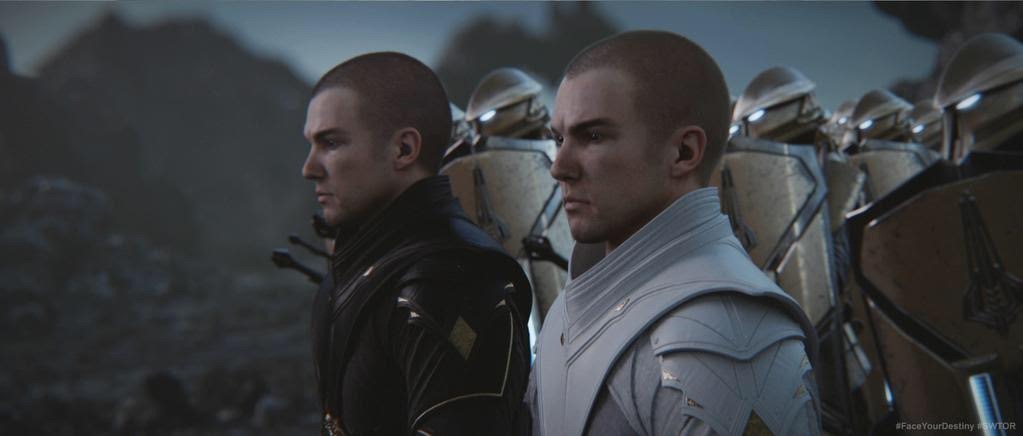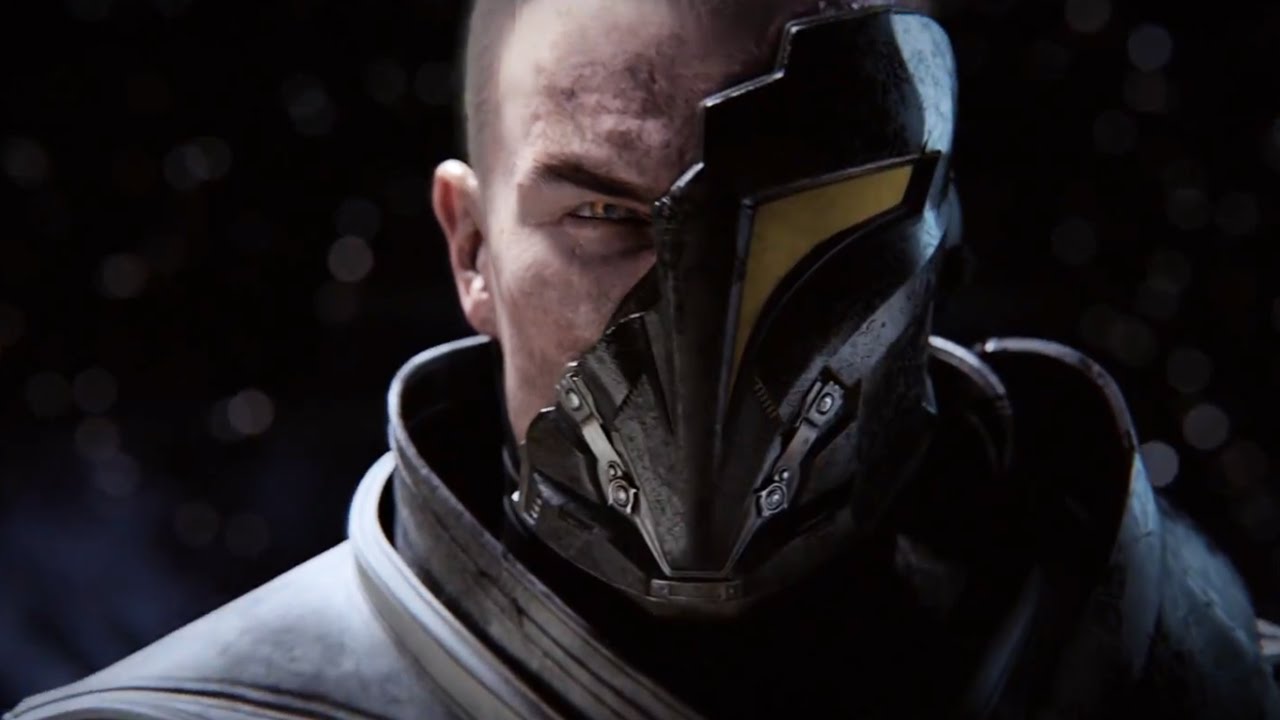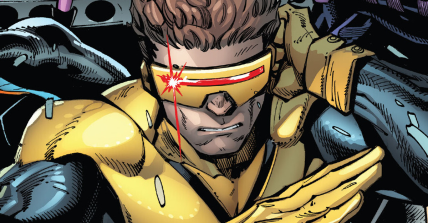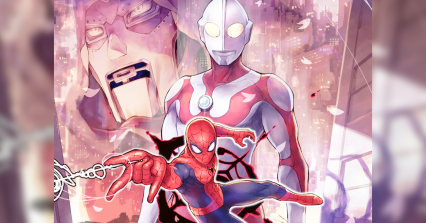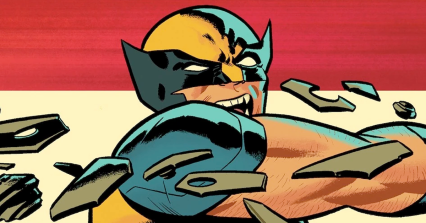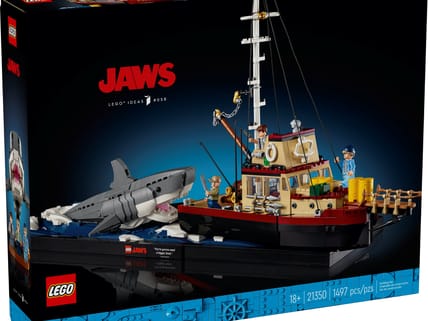Video Game Review: Knights of the Fallen Empire

As a huge fan of the Knights of the Old Republic series I’ll admit I may have gotten a little too excited about Knights of the Fallen Empire (KotFE). And this isn’t the first time this sort of thing has happened either. After all, the series is comprised of two games, one of which ends on a massive cliffhanger hinting at great things to come. Since then fans have been constantly told that the next release for EA’s The Old Republic MMO would serve as a proper sequel to round out the trilogy. So far none of these promises have lived up to the hype, but KotFE looked different.
To be fair, KotFE gets closer than anything else has thus far. So while it’s still a let down, it’s also praiseworthy. It feels more like KOTOR3 than Shadow of Revan did, and that one features the main character of the series. In fact, my disappointment with the expansion shouldn’t dissuade you from playing it. Whether you’re a fan of the dark-fantasy twist on the Star Wars universe that the other games pioneered, or you just like classic Bioware storytelling, there’s a lot to love here. It doesn’t live up to the hype, but that hype was unrealistic to begin with.
Playing KotFE
It’s an unfortunate fact of modern gaming that the hoops one has to jump through in order to play a game are significant enough to merit discussion in a review. While marketed as a successor to KOTOR, Fallen Empire is an expansion to Star Wars: The Old Republic(SWTOR). SWTOR is going through some hard times as it struggles to make back it’s obscene production costs. Given that it was the second most expensive game ever made at the time of it’s release, and considering that it’s been forced into a free-to-play model, it’s surprising that EA didn’t try to charge more for this expansion than they are.
In one sense, the expansion is absolutely free. Subscribers to the game can play the KotFE content without having to buy anything, and keep their access to it even if they unsubscribe in the future. Currently only the first nine chapters of KotFE have been released, but when you subscribe you gain access to all currently released content. This mean that if you wait for all of the chapter to release, you could play the entire expansion for only $15.
It’s an easily exploited system, but rather than punish players for choosing to wait, they reward players that choose to jump in early. Apart from just giving away in game items and currency that one would normally have to pay for with real money, there are also MMO-y activities outside of the main story that can add a lot to the experience.
However, the downside of all this is in order to play this thing (which is supposed to be for fans of the KOTOR single-player games) you have to deal with all the rigamarole that comes with a MMO. The focus of KotFE is a single-player only, story-focused campaign. But you’ve got to create an account, pay a subscription fee, stay logged in to EA’s servers, and deal with mechanics that are clearly designed for a mutli-player game. And this is all to play a primarily single-player experience. By yourself. With no one else.
This also means that you have to deal with all sorts of potential problems unique to online games. In my case, I intended to have this game played and reviewed by the day after launch. But due to connection issues, a bugged subscription page on EA’s website, and their truly awful customer support, I only managed to finish the few hours of released content last night.
When all is said and done, though, I can forgive the developers for forcing us through all this. I can’t imagine another way this game could have been made. Modern RPG’s are expected to be so highly produced that a project like this demands a built in audience. I’m sure the pitch for a successor to KOTOR was made much easier when it had the added benefit of potentially saving the most expensive bomb in video game history.
The Single-Player Campaign
The heart of Knights of the Fallen Empire is it’s series of story missions. These missions are presented much like story missions in the regular game. However, the player is funneled through them from one to the next, without a real opportunity to engage in side-quests or interact with other players. While the game does open up to traditional MMO content after a certain point, it feels like two seperate games, and isn’t really the meat of the experience.
Players have the option of using a character they’ve already achieved level 60 with, or starting one new character at level 60 (additional level 60’s can be bought with real money). This means anyone can jump in and enjoy the story, even if they’ve never played SWTOR.
The setup for the story is also geared towards new players. While it certainly references the player-character’s past, the focus is on a new threat and new characters. The player only spends a few minutes in familiar surroundings before they are frozen in carbonite for nine years. They awake to find that the galaxy has undergone massive changes since they’ve been put on ice, providing a convenient entry point for the player.
It’s a good thing too, because the story is the best thing KotFE has going for it. The last few expansions for SWTOR had the player searching for the whereabouts of the Sith Emperor, who long abandoned his empire in order to continue his quest for immortality. The expansion begins with you homing in on what you believe to be his location, but instead finding an entirely new and vast civilization called Zakuul in unexplored regions of space.
Unsurprisingly, this new empire is ruled by the guy you’re looking for. He’s now given a name, Valkorion, and his people worship him as the holder of the Immortal Throne. While The Sith Empire he resurrected was a thriving, albeit oppressive society dominated by an evil elite, Zakuul is quite different. While he still wields absolute power, his people love him for ushering a golden age of technological development and cultural affluence.
But the player is in on the dark secret behind this facade, and Valkorion immediately seeks to silence them. This sets off a chain of events leading to the Emperor’s (likely intentional) death, setting up the player to act as an unwitting revolutionary.
[easyazon_image align=”center” height=”1080″ identifier=”B00T8NURF8″ locale=”US” src=”http://boundingintocomics.com/wp-content/uploads/2015/11/712JiCMT1AL.jpg” tag=”bounintocomi-20″ width=”1920″]
In the spirit of KOTOR people are quickly drawn to your side and you begin to form your very own cult of personality. Most of the game’s story revolves around collecting these allies, much as the promotional materials suggested it would. Unlike that material lead us to believe, however, you are not *recruiting* these companions. Sure, you hear from characters all the time who thank you for bringing them into the fight or whatever. But the plot is structured in such a way that completely removes the player’s agency from these events.
For instance, the first three companions are gained by them simply showing up to rescue you from your carbonite prison. The next few companions simply show up to help you get out of sticky situations later on. It’s not until Chapter IX, the last of the currently released chapters, that the player-character actually chooses to go out and seek allies on their own.
Fortunately, the overall story makes up for the player’s lack of agency, as do the depth of the characters. Unlike the KOTOR games we get precious few hours of interaction with these characters, but the writers manage to pack a lot of character development into these sparse moments. The primary characters are all written incredibly well, and fit nicely into plot. They all have their moments to shine, and each have a personal stake in the conflict between your alliance and the Zakuul empire.
The highlight in this regard is Valkorion’s family. Valkorion himself is a fascinating villain, but even more interesting are his children and ex-wife. In the trailers leading up to this game we we’re introduced to his twin sons, one of which died in service to his father before the game takes place. We see the surviving son, Arcann, shaped by the horrors of his father’s wars into a relatable, but truly evil tyrant.
While Arcann serves a fine villain, the family’s most interesting surviving members are his sister Vaylin, and his mother whose name I won’t reveal to avoid spoilers. Vaylin is a chilling product of her father’s influence. From the very beginning we see her wantonly murder her most loyal subjects. Later on, when we hear about the extent of her power, it makes hearing about the extent of her psychoticness all the more terrifying.
While the story’s greatest strength are its characters, one of it’s weaknesses is that there are too many. In the first chapter you’re introduced to the what you think are going to be the core of your alliance in the form of rescuers. These three characters (a stoic force user, cocky pilot, and murderous HK droid) would have been plenty sufficient. But it isn’t long before random people with some sort of connection to Zakuul or your other allies just start dropping in. Before you have time to get used to all these people, they start bringing in new people themselves. By the time Chapter VIII rolls around you’ve acquired around a dozen unique characters, and getting there only takes a few hours.
Then Chapter IX hits and you get six new very important characters thrown in your lap over the course of about five minutes. These newcomers seem to have interesting backgrounds and personalities, but I suspect that most players will be too overwhelmed to want to spend much time with them.
It doesn’t even end there! Chapter IX marks the start of the actual MMO content. The primary rewards for this content are yet more companions. Some of these are, thankfully, ways of bringing companions from earlier in the game into the expansion. But many of them aren’t, and players will almost certainly forget who everyone is at this point.
There’s more to the story than companions and villains, though. The plot revolves around the conflict between Zakuul and already existing powers in the core world. Like all great Star Wars stories this broader conflict is contextualized through relatable characters with a personal stake in it. This time, however, the conflict itself is interesting enough to survive the unique problems KotFE has with too many characters.
Much of the appeal of this story comes from bringing back the dark-fantasy elements introduced in KOTOR and amplified by KOTOR2. The characters in this game wield god-like powers, whether from sinister force rituals, powerful ancient technology, or years of experience manipulating vast empires. Where the previous expansion, Shadows of Revan, saw it’s characters reduced to mustache-twirling cartoon villains and sappy do-gooders, KotFE features a clash of galactic titans.
[easyazon_image align=”center” height=”1080″ identifier=”B00T8NURF8″ locale=”US” src=”http://boundingintocomics.com/wp-content/uploads/2015/11/71DUIjzD2BGL.jpg” tag=”bounintocomi-20″ width=”1920″]
Immersion in the plot is aided by a truly unique visual style that distinguishes itself from everything that has come before it. While it’s still easily recognizable as Star Wars over time, someone watching a cutscene without context could easily mistake it for a Square Enix game. In fact, when I first saw the trailer for KotFE during EA’s E3 conference, I thought those cool Star Wars action figures Square made resulted in them actually getting to make a game in the franchise. You can imagine my disappointment.
In some ways it’s a bit jarring, but it works for the most part. Zakuul is an exotic place, hidden from the influence of the Empire and Republic for centuries. It makes sense that everything looks different. Thanks to the incomprehensible genius of KotFE’s art team, these weird visuals work. It simultaneously feels like Star Wars while also feeling like something else. It’s okay that it looks like a JRPG invaded the galaxy because Zakuul is invading the known galaxy.
And besides that, it just works. Sure, the Knights of Zakuul are wielding weird spears and shields and stuff, but they are “light-sabery” spears. And yeah, the Immortal Fleet is pretty bizarre, but it should be – it’s ancient technology of such mysterious origin that even Valkorion doesn’t seem to know where it comes from.
But, try as it might, everything great about this story can’t fully make up for the fact that it’s stuck inside a game that is meant to accommodate a very different kind of experience. The hotkey-combat that the original game centered around is an unwelcomed intruder in this new experience. Nothing is more frustrating than losing yourself in the immersive plot of KotFE, only to have it interrupted by a series of battles using the traditional abstract mechanics of every MMO since World of Warcraft.
The complete lack of inspiration behind the combat encounters makes the problem even worse. I’d estimate that about 40% of all combat encounters are comprised of fighting two “skytroopers” supporting one slightly tougher variant of Zakuulian soldiers. The game often throws these repetitive trios at you in a series of waves, or sets them up as irritating obstacles in a series of corridors. They aren’t difficult or interesting, and only serve to pad the length of the content (which still ends up being only five hours or so).
KotFE as Part of the KOTOR Saga
Some may say it’s unfair to compare an MMO expansion to two of the most-beloved classic single-player RPG’s of all time. But it’s worth remembering that EA has sold this to us as a successor to those games. They got about as close to calling it KOTOR3 as they could without stating it outright.
But given all it’s problems, and combining them with the fact that this is an expansion to the SWTOR MMO, KotFE can’t really find a comfortable place in the franchise. It doesn’t quite live up to the KOTOR legacy, but it also doesn’t jive well with the base game it’s connected to.
This dissonance isn’t just a matter of understanding it’s place outside of the game, though. It carries over to the gameplay itself. It’s felt every time you exit a moment of classic Bioware storytelling and are thrown into a gratuitous MMO hotkey-mash.
This problem get’s really weird in Chapter IX, when you are introduced to your base of operations. Out of nowhere the dialogue system of SWTOR is suddenly abandoned, and you are introduced to a KOTOR style system. Everything from the letter-box format to the blue-text is brought back. Even more jarring is the fact that your character is now silent. If you’ve played the main SWTOR campaign you’ve probably spent 50 hours or more getting to know your character’s unique personality. Now it’s all thrown away in favor of the compromise between a silent protagonist and player-driven dialogue features in classic Bioware titles.
[easyazon_image align=”center” height=”1080″ identifier=”B00T8NURF8″ locale=”US” src=”http://boundingintocomics.com/wp-content/uploads/2015/11/71kWU2BtHTL.jpg” tag=”bounintocomi-20″ width=”1920″]
Both dialogue systems have their strengths and I like them both just fine. But having them both in the same game is so absurd I can’t imagine how this even made it into a triple-a title. There’s no way to even shed a positive light on it. It’s one of the poorest design decisions in recent gaming history.
When thinking about this game it’s impossible not to feel a sense of confusion about what it’s trying to do. The way this confusion leaks into the game itself is distracting. And when you consider that this in-game dissonance is a result of a completely inexcusable change in a core feature it severely impacts how the game is experienced.
The Verdict
Knights of the Fallen Empire isn’t KOTOR3, but it gets close. The story is great despite it’s flaws. Aided by an incredible and unique art-style, and featuring impressive characters, it’s so great that it carries the game through a slog of conflicting mechanics and boring combat.
Being simultaneously a spiritual successor to a single-player franchise and an expansion to an MMO brings out the worst in both of those concepts. A bafflingly change in mechanics in one of the later chapters almost tips the scales into being a net-negative experience.
It’s somehow both terrible and great. You may say that doesn’t make a lot of sense, and I wouldn’t really argue with you. I readily admit that I can’t form a coherent opinion about this game, but I defy any long time fan of the KOTOR series to do so.
Whether you like KotFE or not, you must admit it’s unlike anything that’s ever existed. It’s a single-player MMO. It has a deeply flawed story that feels like a masterpiece. It has two conflicting sets of dialogue mechanics. It claims to be a part of two different franchises, while not fully fitting into either.
So while there is a score at the end of this review, and it accurately reflects my overall attitude towards this game, it doesn’t tell the whole story. I wholeheartedly recommend playing this game, if only so you can experience this Frankenstein’s-monster of a game that could only ever exist in the bizarre landscape of today’s game-industry.
More About:Reviews Video Game Reviews

